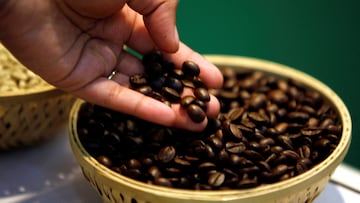Your morning 'Cup of Joe' is getting pricier: Why coffee prices are hitting record highs
The price of coffee has risen steeply in 2024, up over 70% already, and is nearing its highest level since 1977. Here’s why your Joe is getting dearer.

Coffee lovers, brace yourselves. Arabica coffee, the world’s most consumed variety, has seen a staggering 70% price surge this year, reaching historic levels not seen since 1977. Behind this spike lies a perfect storm of climate challenges, supply chain issues, and economic uncertainty that threatens to keep your morning brew expensive for the foreseeable future.
Brazil and Vietnam: the heart of the crisis
Global coffee production has been hit hard, especially in Brazil and Vietnam—two giants in the coffee industry. Brazil, which supplies over 30% of the world’s coffee, is grappling with severe droughts that have decimated its harvest. Farmers are warning that without adequate rainfall, crops will struggle to flower, making a recovery nearly impossible.
Meanwhile, in Vietnam, the second-largest producer of Arabica beans, growers face a double-edged sword: drought has already slashed yields, and now torrential rains threaten to wipe out what remains.
Robusta coffee, another key variety and a staple in European espressos, is also feeling the squeeze, with prices climbing more than 80% this year. Vietnam leads global Robusta production but again the climate-induced disruptions are adding pressure to global supplies.
How this impacts your wallet
Supermarket shelves are already reflecting these challenges. Shoppers are paying more for less as brands respond by shrinking package sizes and raising prices. Nestlé, one of the world’s leading producers of coffee products, recently confirmed that higher prices and smaller packaging will continue as they struggle to absorb the mounting costs.
This year alone, coffee futures—tracked through contracts on the Intercontinental Exchange (ICE)—have jumped by nearly 50%, with Arabica beans commanding the highest prices. As the primary coffee choice in the U.S. due to its sweetness, Arabica accounts for 75% of global production. On the other hand, Robusta comprises 25% and is more popular in Europe and for espresso blends.
More than just weather: the role of trade and regulation
Climate is only part of the story. Rabobank, a leading financial services provider, points to additional factors exacerbating the crisis.
Transportation disruptions in the Red Sea, potential U.S. tariffs, and delays in implementing the European Union’s Deforestation Regulation (EUDR) have all created uncertainty. These hurdles are prompting farmers to hold onto their beans, selling only when absolutely necessary, which further limits local market supplies and drives prices higher.
What’s next for coffee prices?
As demand for coffee remains robust globally, experts warn that consumers may have to adjust to this new normal. With the largest producing nations facing unprecedented challenges, the outlook for lower prices remains bleak.
Whether you’re brewing Arabica in the U.S. or sipping Robusta espresso in Europe, it’s clear that the global coffee supply chain is undergoing a seismic shift—one that might make your daily caffeine fix feel like more of a luxury than ever.
Related stories
Original article written by Laura Martin Sanjuan, translated with the assistance of AI and edited by Greg Heilman.
Get your game on! Whether you’re into NFL touchdowns, NBA buzzer-beaters, world-class soccer goals, or MLB home runs, our app has it all. Dive into live coverage, expert insights, breaking news, exclusive videos, and more – plus, stay updated on the latest in current affairs and entertainment. Download now for all-access coverage, right at your fingertips – anytime, anywhere.